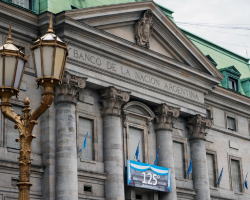How Hawkish and Dovish Monetary Policies Shape Economic Landscapes

In the realm of economic policy, discussions surrounding monetary management often gravitate towards the contrasting approaches encapsulated by the terms "hawkish" and "dovish." These labels, though seemingly dichotomous, serve as vital indicators of the strategies employed to steer economic stability and growth. While their connotations may imply notions of assertiveness and restraint, respectively, their true significance lies in their profound implications for the economic landscape.
Hawkish policies, characterized by a vigilant stance on inflation control, prioritize the utilization of higher interest rates to temper borrowing and stabilize prices. Conversely, dovish approaches emphasize economic expansion and job creation, typically advocating for lower interest rates to incentivize borrowing and stimulate investment. These divergent strategies form the crux of our exploration into the intricate dynamics of monetary policies and their far-reaching impacts on economic performance.
This article aims to dissect the nuanced interplay between hawkish and dovish monetary policies, shedding light on their effects on economic performance and the mechanisms driving their formulation and implementation. By delving into the core principles underpinning these policies, we seek to provide insights into the ever-evolving landscape of monetary management and its profound ramifications for society at large.
Understanding Hawkish and Dovish Policies
The terms "hawkish" and "dovish" are pivotal signifiers representing distinct approaches to monetary management. While these terms might evoke notions of aggression or passivity, their significance lies in their profound implications for economic stability and growth.
Hawkish policies prioritize inflation control through higher interest rates, aiming to curb borrowing and stabilize prices. This approach reflects a belief that controlling inflation is paramount for maintaining economic stability over the long term. By raising interest rates, hawkish policymakers seek to discourage excessive borrowing, which can fuel inflationary pressures, and encourage saving, which can help stabilize the economy during periods of volatility.
Conversely, dovish policies prioritize economic expansion and job creation, often favoring lower interest rates to stimulate borrowing and investment. Dovish policymakers are more willing to tolerate higher levels of inflation in exchange for promoting higher levels of employment and economic growth. By lowering interest rates, they aim to make borrowing cheaper, thereby encouraging consumers and businesses to spend and invest more, which can stimulate economic activity and job creation.
Dovish policies, characterized by expansive monetary measures, seek to foster economic expansion by increasing the money supply and reducing borrowing costs. Lower interest rates incentivize borrowing, driving consumer demand and business investment, ultimately spurring job creation and economic growth. Yet, dovish policies must navigate the risks of inflationary pressures, as excessive growth can lead to rising prices, potentially eroding purchasing power and destabilizing the economy. Striking a balance between stimulating growth and controlling inflation remains a central challenge for policymakers advocating dovish monetary policies.

Navigating the Contrast: Hawkish vs Dovish Monetary Policies
The debate between hawkish and dovish monetary policies revolves around their implications for economic growth and stability. Hawkish approaches, often characterized by concerns over inflation, prioritize measures to curb rising prices and wages. This typically involves raising interest rates, tightening the money supply, and imposing restrictions on economic expansion.
Higher interest rates under hawkish policies increase the cost of borrowing, discouraging individuals and businesses from seeking loans for purchases and investments. As borrowing becomes less affordable, consumption and corporate hiring may slow down, potentially dampening economic growth. However, hawkish measures can benefit individuals with fixed incomes by preserving the purchasing power of their currency amid inflationary pressures.
Conversely, dovish policies lean towards stimulus measures to foster economic growth, particularly during recessions or periods of sluggish activity. Lower interest rates, a more relaxed money supply, and increased spending and hiring are hallmarks of dovish strategies. These policies aim to stimulate demand and investment, thereby propelling economic activity and job creation.
Exploring the Dynamics of the Federal Open Market Committee
The Federal Open Market Committee (FOMC), a key entity within the Federal Reserve System, plays a central role in shaping monetary policy. Comprising members with diverse policy inclinations, including hawks, doves, and moderates, the FOMC oversees open market operations (OMOs) to regulate the money supply.
OMOs involve the purchase or sale of government assets, influencing the availability of funds in the banking system. For instance, selling government assets reduces the money supply, while purchasing securities increases it. These transactions are managed by the Federal Reserve Bank of New York, acting on behalf of the FOMC.
For instance, Neel Kashkari, president of the Minneapolis Federal Reserve branch, exemplifies dovish sentiments. Conversely, Jerome Powell, the Chair of the Federal Reserve, is known for leaning towards a more hawkish stance. Shifts in monetary policy, whether towards hawkish or dovish directions, respond to prevailing economic conditions and policy objectives.
In the wake of the 2008 financial crisis, monetary policy leaned heavily dovish, maintaining near-zero interest rates for an extended period. Subsequently, policymakers adopted a more hawkish approach around 2015, gradually raising interest rates to provide a buffer for future economic downturns. However, the economic disruptions wrought by the COVID-19 pandemic prompted a return to dovish policies, aiming to stimulate economic recovery and mitigate the pandemic's adverse effects.
The federal funds rate, determined by interactions within the banking system, is a key policy tool influenced by the FOMC's decisions. Changes in the federal funds rate ripple through the economy, impacting short-term and long-term interest rates, credit and investment dynamics, employment levels, and overall economic output.
In summary, the interplay between hawkish and dovish monetary policies reflects policymakers' efforts to strike a balance between controlling inflation and fostering economic growth. The decisions made by institutions like the FOMC shape the trajectory of monetary policy, influencing the broader economic landscape.
How Do Interest Rates Become Established?
Interest rates serve as a cornerstone of monetary policy, shaped by a myriad of factors and mechanisms. Central banks, exemplified by institutions like the Federal Reserve, wield significant influence in determining these rates, with the overarching goal of fostering economic stability and achieving policy objectives.
One pivotal determinant of interest rates lies in the dynamics of supply and demand within the financial system. During periods of heightened demand for credit, such as economic expansions or investment booms, interest rates typically ascend as lenders capitalize on profit opportunities. Conversely, in times of subdued credit demand, interest rates may decline to stimulate borrowing and bolster economic activity.
Furthermore, central banks utilize interest rates as a potent instrument for managing inflation and ensuring price stability. Elevated interest rates can effectively temper inflationary pressures by curbing consumer spending and investment, thereby moderating demand for goods and services. Conversely, lower interest rates can catalyze economic growth by rendering borrowing more affordable, prompting increased consumer spending and business investment.
The Federal Open Market Committee plays a pivotal role in shaping short-term interest rates, particularly through its influence on the federal funds rate. Adjustments to this rate have cascading effects on other interest rates across the economy, impacting borrowing costs for consumers, businesses, and financial institutions alike.
Moreover, interest rates are subject to the broader macroeconomic landscape, including factors like inflation expectations, unemployment rates, and global economic conditions. Central banks meticulously evaluate these macroeconomic indicators when crafting monetary policy, ensuring alignment with broader economic objectives.
In essence, the establishment of interest rates entails navigating a complex interplay of market dynamics, central bank strategies, and prevailing economic conditions. Understanding these intricacies is indispensable for policymakers and market participants alike as they endeavor to comprehend the nuances of monetary policy and its implications for the economy.
Conclusion
The debate between hawkish and dovish monetary policies underscores the perpetual quest for equilibrium in economic management. While hawkish approaches prioritize price stability and risk mitigation, dovish strategies aim to spur growth and employment. Within the Federal Open Market Committee, the clash of these ideologies shapes the trajectory of monetary policy, influencing interest rates and broader economic dynamics. As policymakers navigate the complexities of economic cycles and global uncertainties, the interplay between hawkish and dovish perspectives remains a central theme in shaping the course of economic prosperity and stability. Understanding the diverse nature of these policies is essential for stakeholders across the financial landscape as they seek to navigate the ever-evolving terrain of monetary management and its profound impacts on society.
About AdroFx
Established in 2018, AdroFx is known for its high technology and its ability to deliver high-quality brokerage services in more than 200 countries around the world. AdroFx makes every effort to keep its customers satisfied and to meet all the trading needs of any trader. With the five types of trading accounts, we have all it takes to fit any traders` needs and styles. The company provides access to 115+ trading instruments, including currencies, metals, stocks, and cryptocurrencies, which make it possible to make the most out of trading on the financial markets. Considering all the above, AdroFx is the perfect variant for anyone who doesn't settle for less than the best.










